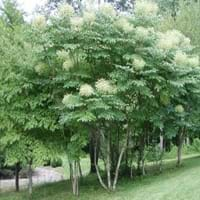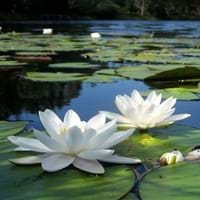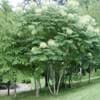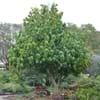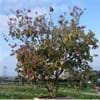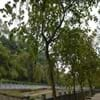Life Span
Perennial
Perennial
Type
Tree
Aquatics, Flowering Plants
Origin
Mid-Atlantic United States, Southeastern United States, South-Central United States, Texas
Not Available
Types
Not Available
Not Available
Habitat
Dappled Shade, Shady Edge, Woodland Garden Secondary
Ponds
USDA Hardiness Zone
4-9
4-11
AHS Heat Zone
9-1
Not Available
Sunset Zone
3a, 3b, 4, 5, 6, 7, 8, 9, 14, 15, 16, 17, 18, 19, 20, 21, 22, 23, 24
Not Available
Habit
Thicket/Colonizing
Spreading
Flower Color
White, Green, Ivory
White
Flower Color Modifier
Bicolor
Bicolor
Fruit Color
Purple, Black
Non Fruiting Plant
Leaf Color in Spring
Green, Blue Green, Dark Green
Light Green
Leaf Color in Summer
Green, Blue Green, Dark Green
Light Green
Leaf Color in Fall
Yellow, Green, Purple, Blue Green, Dark Green, Yellow green
Green
Leaf Color in Winter
Not Available
Green
Leaf Shape
bipinnate
Round
Plant Season
Spring, Summer, Fall, Winter
Early Summer, Late Summer
Sunlight
Full Sun, Partial Sun
Partial Sun
Type of Soil
Clay, Loam, Sand
Aquatic Plant
The pH of Soil
Acidic, Neutral, Alkaline
Aquatic Plant
Soil Drainage
Well drained
Average
Bloom Time
Summer
Early Summer, Late Summer
Tolerances
Pollution, Soil Compaction
waterlogging
Where to Plant?
Ground
In Water
How to Plant?
Cuttings, Divison, Seedlings
Stem Planting
Plant Maintenance
Medium
Medium
Watering Requirements
Needs high amount of water
Plant grows in water
In Summer
Lots of watering
Aquatic Plant
In Spring
Moderate
Aquatic Plant
In Winter
Average Water
Aquatic Plant
Soil pH
Acidic, Neutral, Alkaline
Aquatic Plant
Soil Type
Clay, Loam, Sand
Not Applicable
Soil Drainage Capacity
Well drained
Aquatic Plant
Sun Exposure
Full Sun, Partial Sun
Partial Sun
Pruning
Remove damaged leaves, Remove dead branches, Remove dead leaves
No need to prune
Fertilizers
All-Purpose Liquid Fertilizer
Fertilize the first year
Pests and Diseases
Aphids, Leaf spot, Mealybugs
Leaf eating pests, Sap-Sucking Insects, Stem rot
Plant Tolerance
Drought
waterlogging
Flower Petal Number
Single
Single
Foliage Texture
Coarse
Fine
Foliage Sheen
Matte
Matte
Attracts
Bees, Butterflies, Insects, Not Available
Fishes
Allergy
Skin irritation
Not Available
Aesthetic Uses
Borders, Woodland margins
Showy Purposes, Water gardening
Beauty Benefits
Not Available
Good for skin, Moisturizing, Weightloss
Environmental Uses
Air purification
Not Available
Medicinal Uses
Alterative, Analgesic, Diaphoretic, Opthalmic
Antibacterial, Anti-fungal, anti-inflammatory, Antioxidants, Astringent, Clears heat, Combats Stress, Detoxification, Diabetes, High cholestrol, Improve heart health, Liver problems, Low Blood Pressure, Phosphorus, Rich in Iron, Vitamin B, Vitamin C
Part of Plant Used
Bark, Leaves, Root
Leaves, Root, Stem
Other Uses
Used as a potherb
Can be made into a herbal tea, Culinary use, Used as Ornamental plant, Used in herbal medicines
Used As Indoor Plant
No
Yes
Used As Outdoor Plant
Yes
Yes
Garden Design
Feature Plant, Foundation, Mixed Border
Bog Garden, Water Gardens
Botanical Name
ARALIA spinosa
Nymphaea lotus
Common Name
American Angelica Tree, Devil's Walking Stick, Hercules' Club
white Egyptian lotus, tiger lotus, white lotus or Egyptian white water-lily
In Hindi
Devil's Walking Stick
सफेद कमल
In German
Teufelsspazierstock
Tigerlotus
In French
Walking bâton du diable
Lotier d'Égypte, Lotus tigré
In Spanish
Bastón del Diablo
loto tigre, nenúfar blanco egipcio
In Greek
Περπάτημα Stick διαβόλου
λευκό λωτού
In Portuguese
Vara andando de diabo
nenúfar-branco, lótus-branco, lótus-do-egipto, loto-sagrado-do-egito e lótus-sagrado-do-egito
In Polish
Diabelski laska
białego lotosu
In Latin
Virgam diaboli
albus Lotus
Phylum
Magnoliophyta
Magnoliophyta
Class
Magnoliopsida
Magnoliopsida
Order
Apiales
Nymphaeales
Family
Araliaceae
Nymphaeaceae
Clade
Angiosperms, Asterids, Eudicots
Angiosperms
Tribe
Not Available
Not Available
Subfamily
Aralioideae
Not Available
Number of Species
Not Available
Not Available
Importance of Devil's Walking Stick and White Lotus
Want to have the most appropriate plant for your garden? You might want to know the importance of Devil's Walking Stick and White Lotus. Basically, these two plants vary in many aspects. Compare Devil's Walking Stick and White Lotus as they differ in many characteristics such as their life, care, benefits, facts, etc. Every gardener must at least have the slightest clue about the plants he wants to plant in his garden. Compare their benefits, which differ in many ways like facts and uses. The medicinal use of Devil's Walking Stick is Alterative, Analgesic, Diaphoretic and Opthalmic whereas of White Lotus is Antibacterial, Anti-fungal, anti-inflammatory, Antioxidants, Astringent, Clears heat, Combats Stress, Detoxification, Diabetes, High cholestrol, Improve heart health, Liver problems, Low Blood Pressure, Phosphorus, Rich in Iron, Vitamin B and Vitamin C. Devil's Walking Stick has beauty benefits as follows: Not Available while White Lotus has beauty benefits as follows: Not Available.
Compare Facts of Devil's Walking Stick vs White Lotus
How to choose the best garden plant for your garden depending upon its facts? Here garden plant comparison will help you to solve this query. Compare the facts of Devil's Walking Stick vs White Lotus and know which one to choose. As garden plants have benefits and other uses, allergy is also a major drawback of plants for some people. Allergic reactions of Devil's Walking Stick are Skin irritation whereas of White Lotus have Not Available respectively. Having a fruit bearing plant in your garden can be a plus point of your garden. Devil's Walking Stick has showy fruits and White Lotus has showy fruits. Also Devil's Walking Stick is not flowering and White Lotus is not flowering . You can compare Devil's Walking Stick and White Lotus facts and facts of other plants too.
